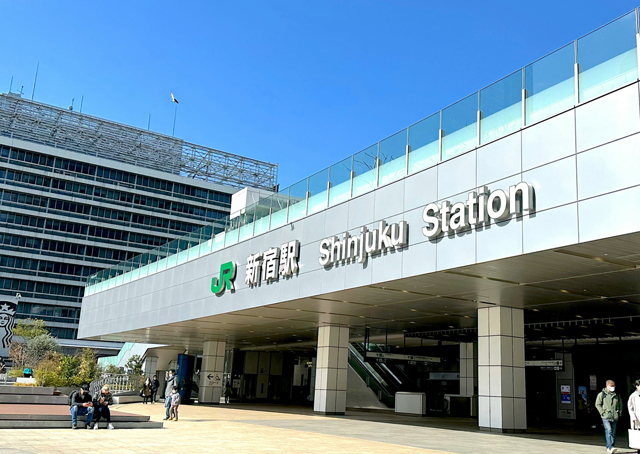
In January of this year, the Japanese government made a momentous announcement: after seventy years of the Kunrei-shiki system being designated as the official standard for romanization of the Japanese language, it would be considering formally switching to the rival Hepburn system instead. This news might come as a surprise to many residents of Japan, as the Hepburn system is already the de facto standard used in most facets of daily life. For example, Japan Railways station names, road signs, and the passports of Japanese nationals all use a form of Hepburn-style romanization. However, the Kunrei-shiki system has long vexed native-speaking English teachers, as it is the style mandated to be taught to upper-grade elementary school students as part of the national primary-school English curriculum. On the other hand, junior high school textbooks generally favor the Hepburn system, so “Syota” and “Tubasa” must later be untaught those spellings of their names and learn to write them as “Shota” and “Tsubasa,” respectively.
Advocates of the Hepburn system point out that it captures the actual pronunciations of Japanese words more accurately for the benefit of non-native speakers. For example, in many languages including English, si and shi or ti and chi are separate phonemes. Rendering Japanese words and place names in the Kunrei-shiki style of romanization can cause non-native speakers to pronounce these words in ways that are inaccurate and difficult for Japanese people to understand, such as in the case of a foreign visitor asking for directions to the “Tyuo Line” or “Tidorigahuti Moat.”
On the other hand, the main advantage of the Kunrei-shiki system is that it more faithfully reflects the phonology of the Japanese language. After all, a native Japanese speaker will perceive “Fukuoka” and “Hakata” or “Shibuya” and “Suruga” as beginning with the same consonants. This also makes it easier to explain the morphological changes of Japanese grammar to language learners, since regular verb changes may appear irregular when spelled out using the Hepburn system.
|
Japanese verb 立つ (“to stand”) |
Dictionary Form |
Negative Form |
Polite Form |
|
Hepburn |
tatsu |
tatanai |
tachimasu |
|
Kunrei-shiki |
tatu |
tatanai |
tatimasu |
However, this particular issue can easily be bypassed by teaching the Japanese Hiragana and Katakana syllabaries at an early stage in the curriculum to avoid reliance on Romanized spellings, as is nowadays a common practice in Japanese-language education. Thus, the unpopular Kunrei-shiki system may be considered by many to be an outdated relic, and the anticipated revision to be confirmed by the Japanese Cabinet will no doubt more firmly cement that status.
Still, there is one situation in which the Kunrei-shiki style of romanization will probably survive indefinitely: keyboard input. Even native English speakers proficient in Japanese often prefer it over the Hepburn system in this context—after all, typing “si,” “ti,” or “tu” requires fewer letters.
【日本語訳】
「Sinzyuku」か「Shinjuku」か? 日本語のローマ字表記は2つの方式が覇権を争うが、一方が優位になりつつある
今年1月、日本政府は重大な発表を行った。70年間、訓令式が日本語のローマ字表記の公式標準として指定されてきたが、その代わりにライバルであるヘボン式への正式な切り替えを検討するというのだ。ヘボン式はすでに日常生活のほとんどの場面で使われている事実上の標準であるため、このニュースは多くの日本在住者にとって驚きかもしれない。例えば、JRの駅名、道路標識、日本国民のパスポートはすべてヘボン式ローマ字を使用している。しかし、訓令式は小学校高学年の英語教育で教えることが義務付けられているため、ネイティブスピーカーの英語教師を長い間悩ませてきた。他方で、中学校の教科書ではヘボン式が一般的であるため、小学生のころ自分の名前を「Syota(しょうた)」や「Tubasa(つばさ)」と覚えた子供たちは、後にそれを一旦忘れて、「Shota」と「Tsubasa」と書くことを学ばなくてはならない。
ヘボン式は、日本語を母国語としない人たちのためにより正確に日本語の実際の発音を捉えていると、ヘボン式の支持者たちは指摘する。例えば、英語を含む多くの言語では、siとshi、tiとchiは別々の音素である。日本語の単語や地名を訓令式ローマ字で表記すると、外国人旅行者が「Tyuo Line(中央線)」や「Tidorigahuti Moat(千鳥ヶ淵)」への行き方を尋ねるような場合、日本人には理解しにくい不正確な発音をしてしまう可能性がある。
一方、訓令式の主な利点は、日本語の音韻をより忠実に反映していることである。日本語を母語とする話者は「Fukuoka(福岡)」と「Hakata(博多)」、「Shibuya(渋谷)」と「Suruga(駿河)」をそれぞれ同じ子音で始まると認識する。また、ヘボン式で表記すると規則的な動詞の変化が不規則に見えることがあるため、日本語文法の形態変化を日本語の学習者に説明しやすくなる。
|
日本語の動詞「立つ」 |
終止形 |
否定形 |
丁寧形 |
|
ヘボン式 |
tatsu |
tatanai |
tachimasu |
|
訓令式 |
tatu |
tatanai |
tatimasu |
しかしこの特殊な問題は、現在日本語教育で一般的に行われている、ローマ字表記への依存を避けるためにカリキュラムの早い段階で日本語のひらがなとカタカナの五十音を教えるという方法で簡単に回避することができる。このように、不人気な訓令式は多くの人に時代遅れの遺物と思われており、日本の閣議で決定されると予想される改訂によって、その地位がより強固なものになることは間違いない。
それでも、訓令式ローマ字表記がおそらく永久に生き残るであろう状況がひとつある。キーボード入力だ。日本語に堪能な英語のネイティブスピーカーでさえ、この場合に限ってはヘボン式よりも訓令式ローマ字入力の方を好むことが多い。結局のところ、「si」、「ti」、「tu」と入力する方が少ない文字数で済むのだ。
最後まで記事をご覧いただき、ありがとうございます。
株式会社イデア・インスティテュートでは、世界各国語(80カ国語以上)の翻訳、編集を中心に
企画・デザイン、通訳等の業務を行っています。
翻訳のご依頼、お問わせはフォームよりお願いいたします。
お急ぎの場合は03-3446-8660までご連絡ください。



